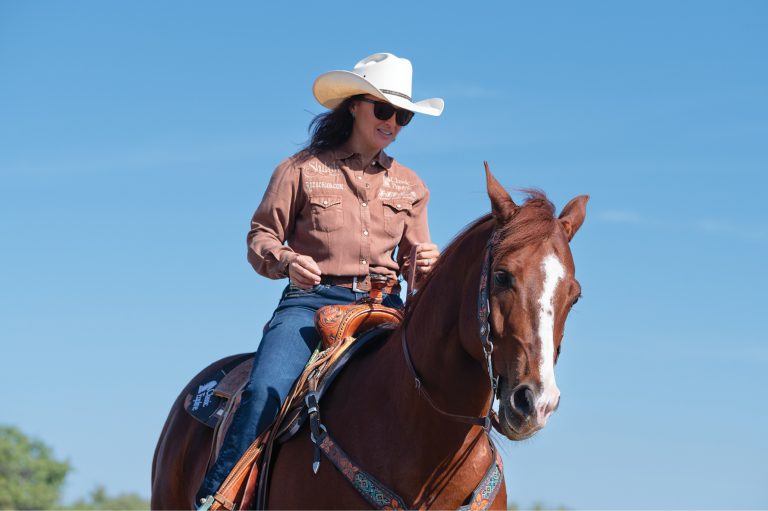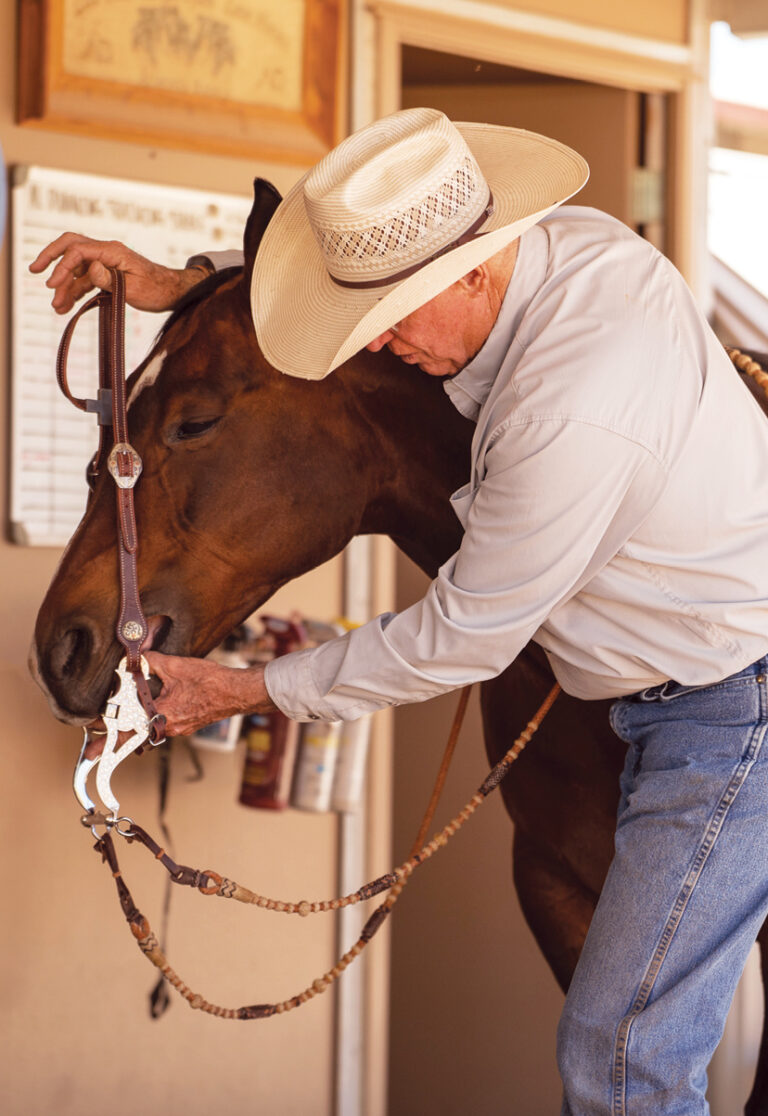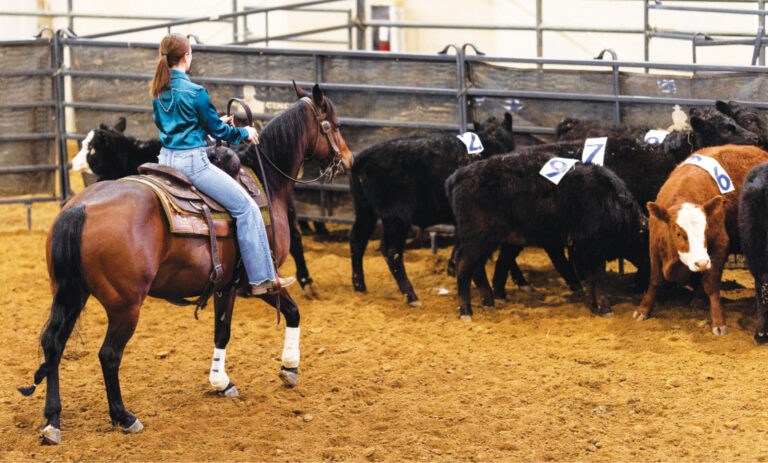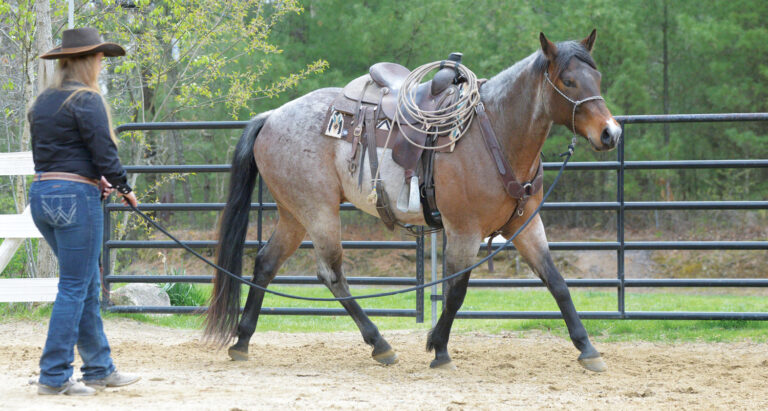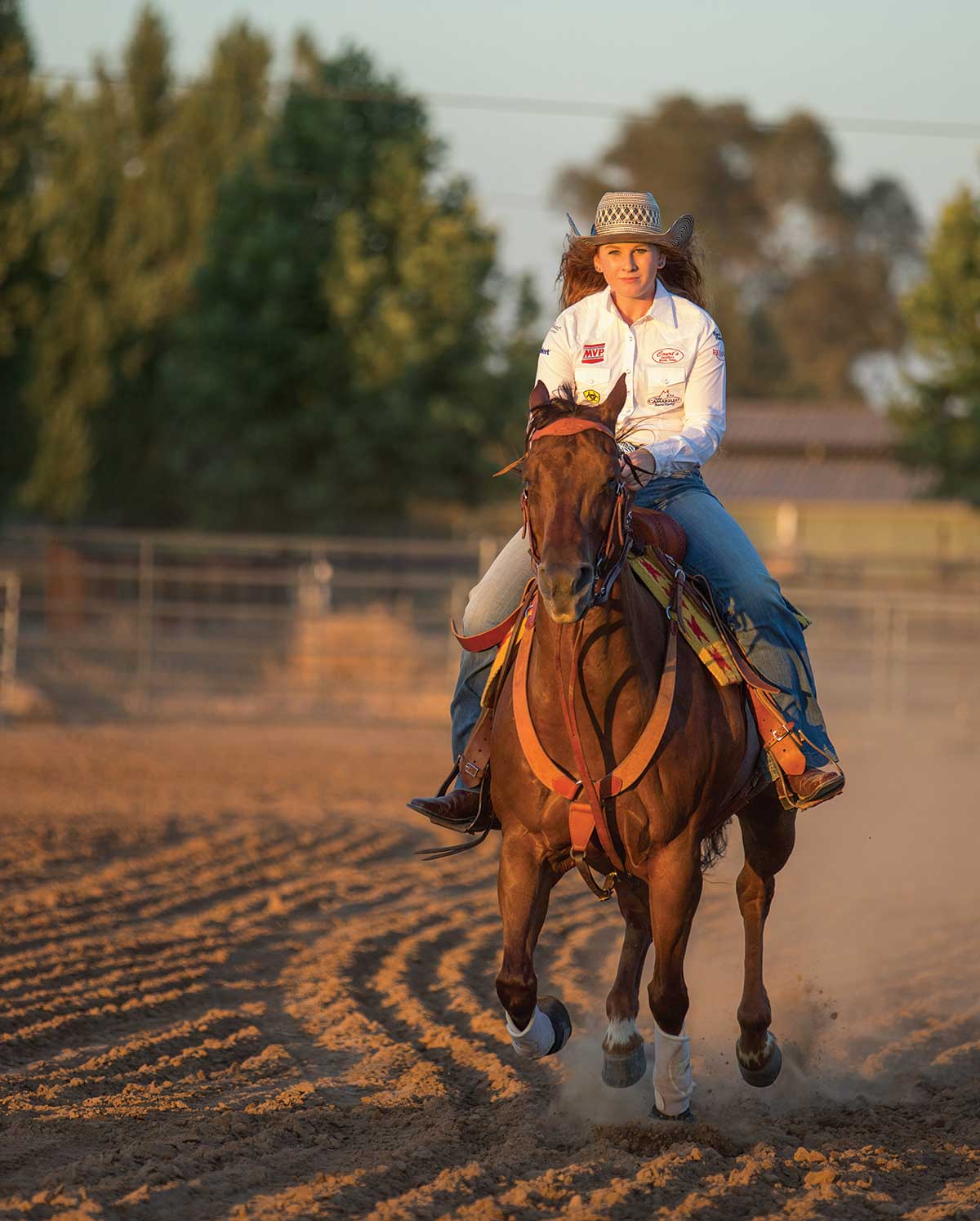
You’ve been working hard to beat your personal barrel-racing time, but can’t seem to get past that plateau. It’s a scenario we see often as coaches and can make even the best riders become discouraged in their ability to improve in their riding discipline.
Sometimes all it takes to clock a faster time is a minor change or adjustment in your tack. When tack is adjusted properly for your horse, it can help you with your riding ability and allow your horse to move comfortably in the arena, whether you’re running in a speed event or riding trails.
Here, we’ll talk about six pieces of tack you might use every day, and discuss some of the minor adjustments you can make to help you see major results in the arena and maximize performance, safety, and comfort for both you and your horse.
Curb Straps
The problem: Adjusting the curb strap too loose or attaching it to the wrong part of the bit.
The solution: We see it at clinics all the time: Riders’ curb straps attached in the wrong spot. The curb strap is designed to add an additional pressure point to help collect and balance your horse. When you adjust your chinstrap, attach it to the curb ring—evenly on each side of the bit—so it hangs in your horse’s chin groove. You can choose between a leather curb or chain curb strap, depending on the sensitivity of your horse and your riding experience. A chain tends to have a stronger signal than a leather strap.
Ensure that your curb strap lies flat against your horse’s jaw and isn’t twisted when you attach it. Check to see that you can fit two fingers between the strap and your horse’s jaw. A curb strap that’s too loose will be ineffective; too tight and it can put too much pressure on your horse and won’t offer him a release.
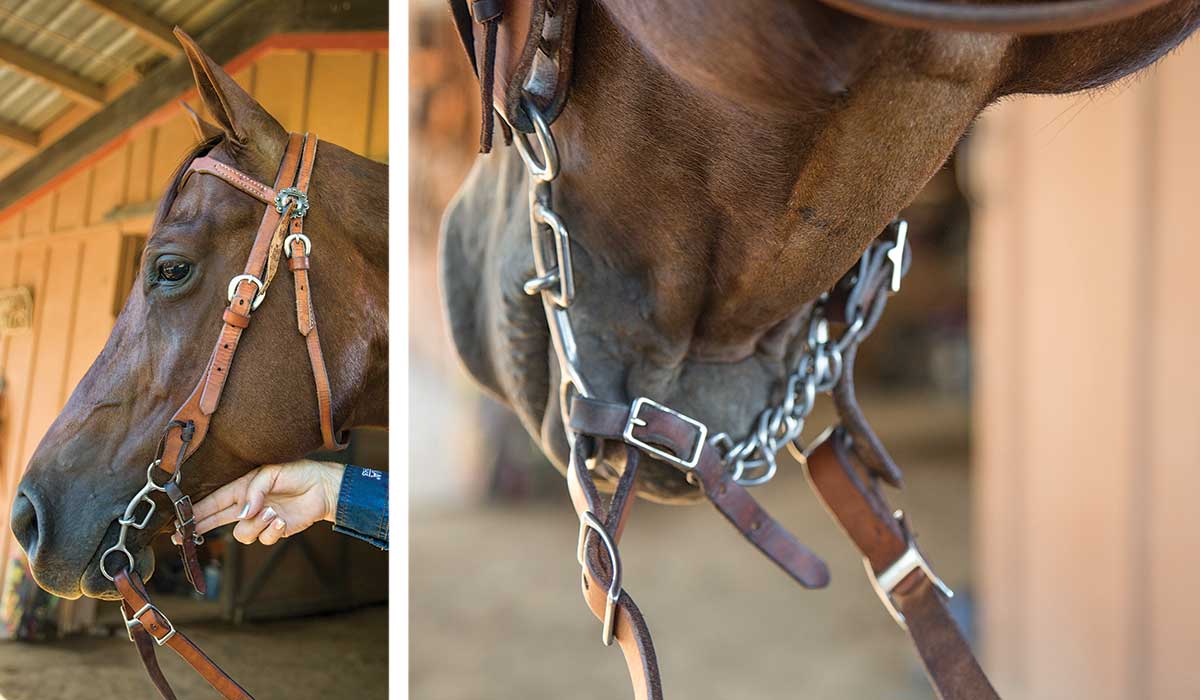
Cinch Fit
The problem: Using a cinching system that doesn’t allow your horse to lengthen in stride and expand his rib cage, or not properly adjusting your back cinch.
The solution: A nylon cinch doesn’t have enough give to allow your horse to lengthen his stride, especially paired with nylon tie-straps or billets. If you like to use a nylon cinch, pair it with a leather billet to promote elasticity in your cinching system. This allows your horse to lengthen his stride without discomfort. If you like to use a nylon billet, try pairing it with a mohair cinch for similar results.
The back cinch is commonly used for trail rides and performance events to help stabilize your saddle and keep it from shifting during your ride. If you use a back cinch, it should be adjusted snugly against your horse’s belly without being too tight. A back cinch that’s adjusted too loose can be a safety hazard if your horse stumbles or kicks at flies and gets his back foot caught. The combination of the front and back cinch keeps your saddle secure and balanced across your horse’s back, regardless of your discipline.
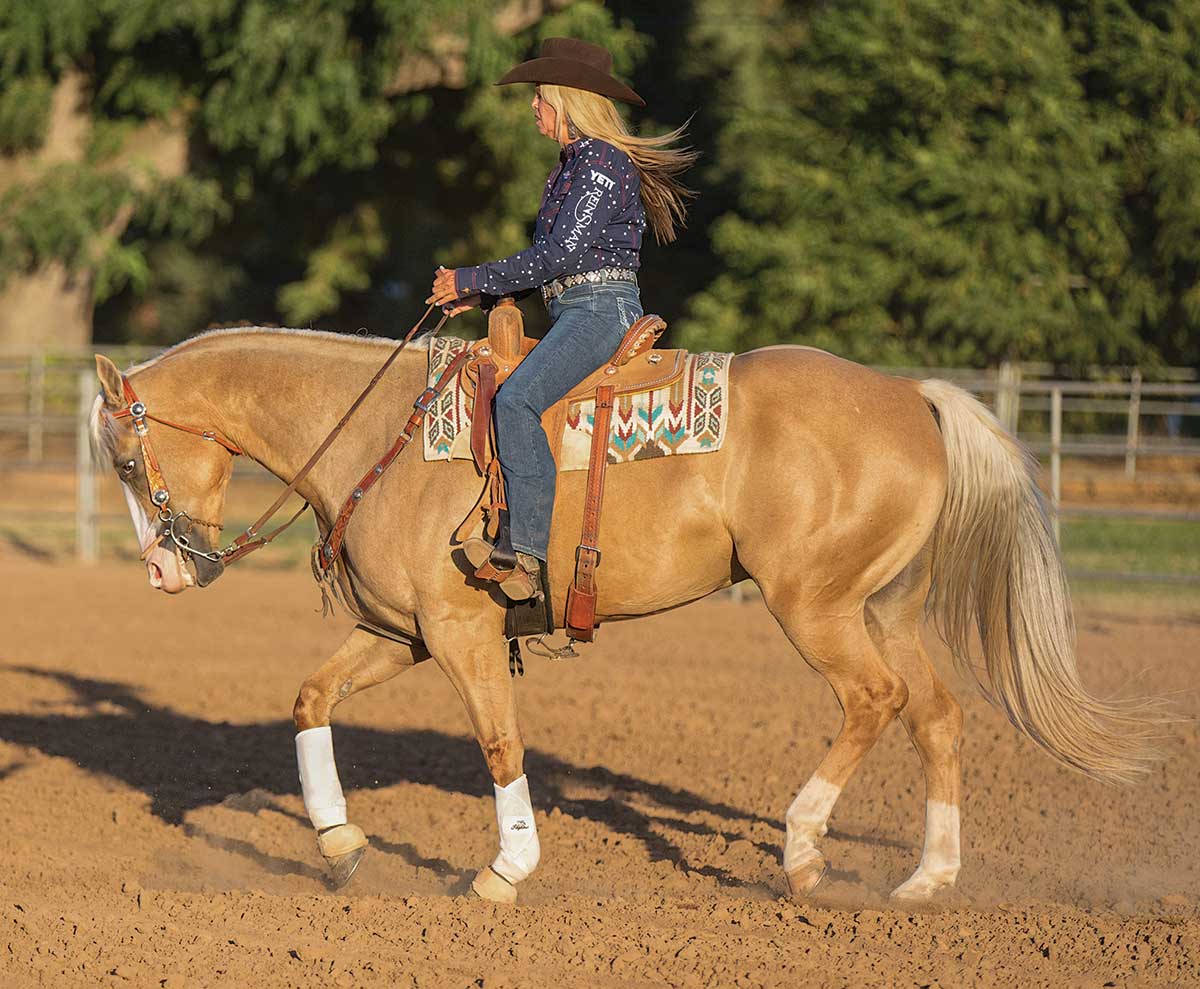
Rein Adjustment
The problem: Not keeping contact with your horse during a run.
The solution: When running barrels, you need a style of rein that’s easy for you to adjust while riding. Your rein style depends on your personal preference, but if your horse tends to get strong when you’re running, look for a thicker rein with a little grip so he can’t pull the reins out of your hands.
Ideally, adjust your reins where you can confidently steer your horse around a pattern without putting your body out of position. If you find your hands come up too high during your run, shorten your reins so you’re not working harder to maintain contact with your horse.
In addition to shortening your reins, practice lengthening and shortening the slack while you ride at home. Your rein adjustments must become second nature; you don’t want to lose valuable seconds during a race because you’re too focused on shortening your reins.
Pregame Ritual
As you prepare to compete, have a pregame ritual you follow every time to avoid tack-related accidents. Before you get on to warm up your horse, go through and thoroughly check out all of your equipment and verify everything is functioning properly.
As you do your walk-around, look for any signs of broken gear or pieces that need to be replaced—due to cracking, fraying, or other wear—before you put your foot in the stirrup. See that all of your buckles are latched and the straps tucked down. Check your billets and cinch to make sure they’re not rubbing your horse, but are tight enough that your saddle won’t slip while riding. Look at your headstall and curb strap to make sure they’re adjusted properly and there are no loose Chicago screws. This is also a good time to check that your stirrups are the right length and even on both sides.
Finally, always check for any foreign bodies, such as burrs or gravel, that might’ve made their way into your horse’s leg wear during your warm-up. These small pieces can cause irritation or injury.
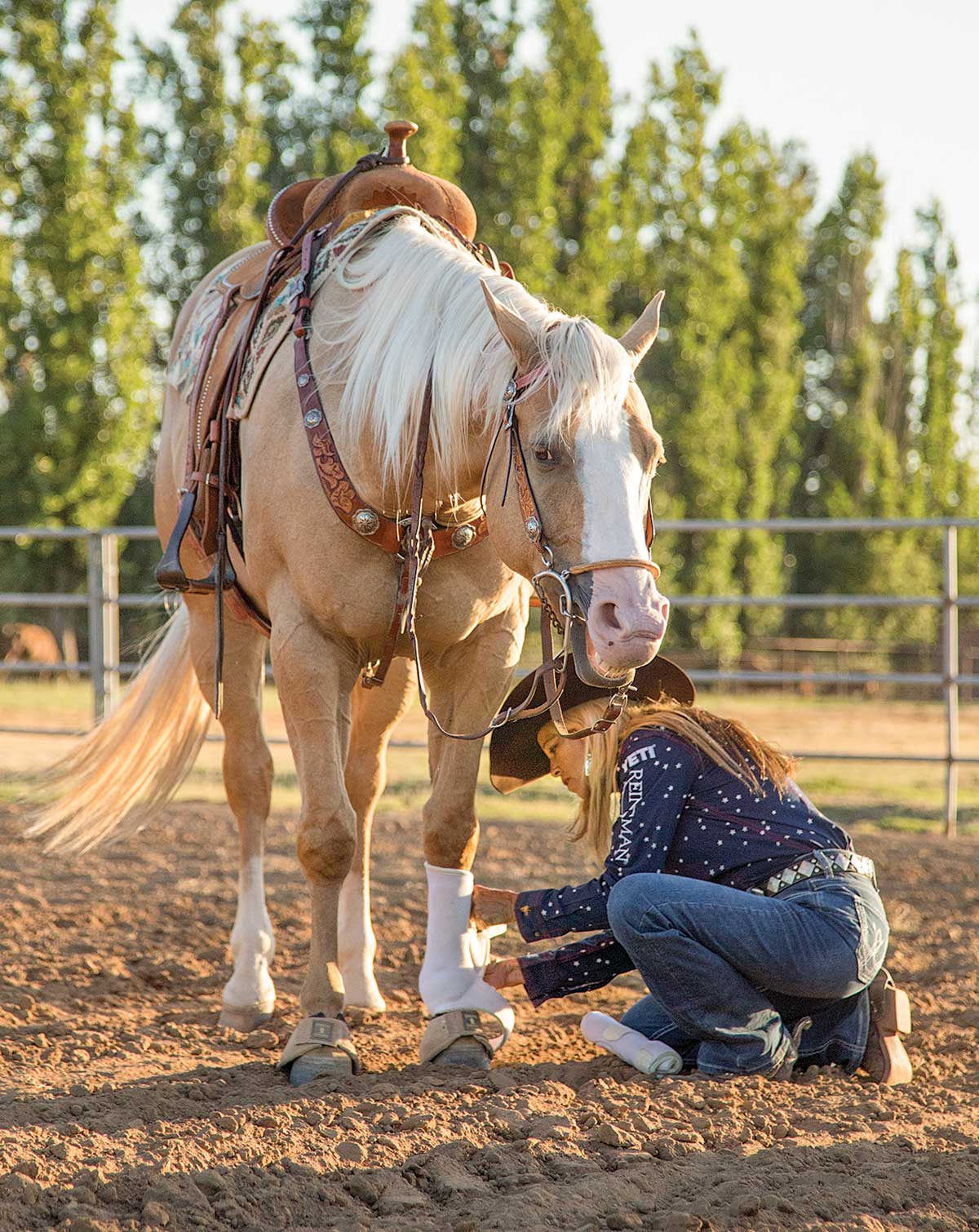
Stirrup Length
The problem: Too-long stirrups.
The solution: You can keep your stirrups longer for some events or leisure riding, but as a barrel racer, you need to shorten your stirrups to help you stay balanced in your seat going around the barrels.
When your stirrups are too long, you’re more likely to pop out of the saddle, or even lose a stirrup. Shorten your stirrups until you have a soft bend in your knee and can keep your foot comfortably in the stirrup.
Protective Legwear
The problem: Not using protective boots on your horse during a run.
The solution: Protective boots are imperative for your horse’s front legs, as they provide support and guard your horse’s legs during competition and training. You may notice that most riders choose between splint boots, protective sport boots, or polo wraps when they run.
Always take care to apply any protective legwear correctly. Improper use can cause damage to your horse’s sensitive soft tissues in his lower legs. (To see how to correctly use polo wraps, visit HorseandRider.com.) Also be mindful of how long you leave wraps or boots on your horse. Apply your horse’s legwear before you exercise him, and then immediately remove them after you’re done riding to allow his legs to cool down. For polo wraps, apply electrical tape to the top of your wrap to keep the hook-and-loop closures from coming undone mid-run.
Bell boots are also beneficial for a barrel horse’s daily riding routine. They’re fairly easy to use and are a great way to protect your horse’s front heels from injury caused by overreaching. They can also prevent your horse from pulling a shoe.
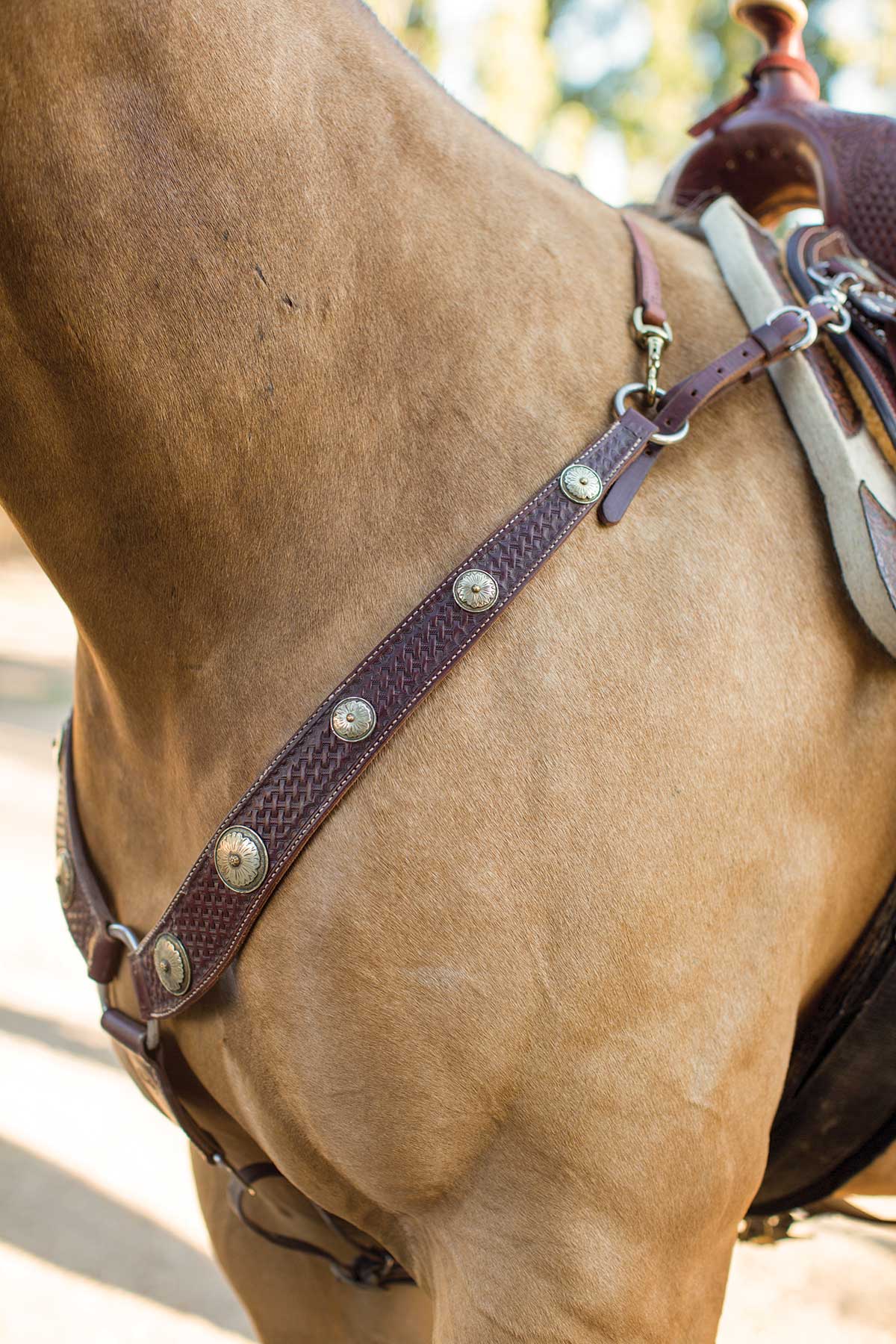
Breast-Collar Fit
The problem: Adjusting your breast collar too loose or too tight.
The solution: To make gains in the arena, your horse needs to be able to extend his reach without any restrictions. If your breast collar is too low, it’s going to pull across your horse’s chest, inhibiting him from lengthening his stride—which also limits your ability to clock faster times.
If you have a low D-ring on your saddle and you put on a traditional breast collar, it’ll end up across the lower point of your horse’s shoulder. To keep your breast collar from getting too low on your horse’s chest, add a neck strap that runs over his withers to keep it in position.
On top of getting in your horse’s way when he runs, a loose-fitting breast collar can’t do its job of holding your saddle securely in place; you don’t want your cinch and saddle sliding back mid-run.
On the other hand, a breast collar that’s too tight will irritate your horse and tighten across his windpipe when the saddle pushes backward and can potentially cut off airflow.
To fit your breast collar properly, adjust the tugs evenly on both sides, and ensure that the middle of the breast collar—where both sides meet—is in the center of your horse’s chest. You can also purchase separate tug straps in different lengths to help with the overall fit of your breast collar.
Sharon Camarillo and Donna Irvin, Lockeford, California, are both award-winning professional barrel racers and AQHA professional horsemen who provide clinics around the world educating aspiring barrel racers. For additional clinic information and to learn more about them, visit sharoncamarillo.com.

